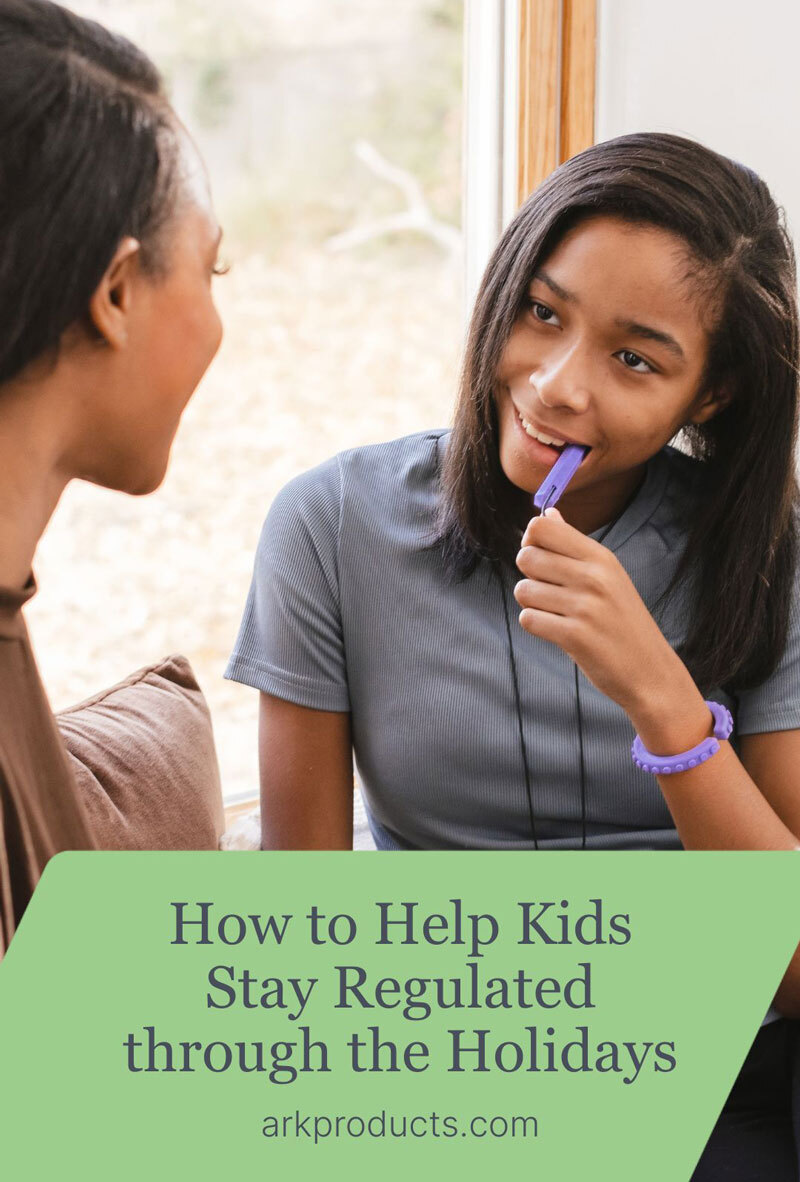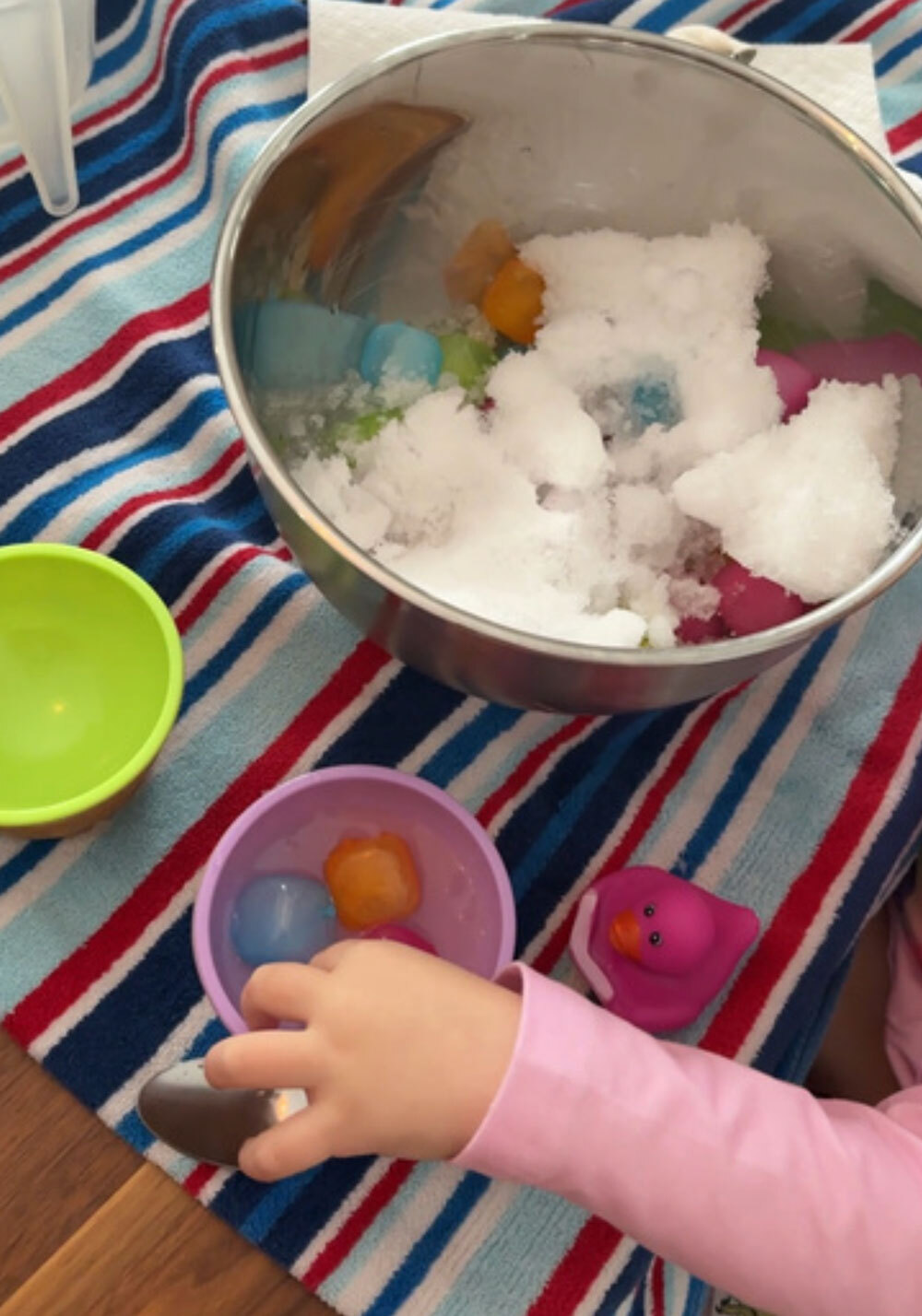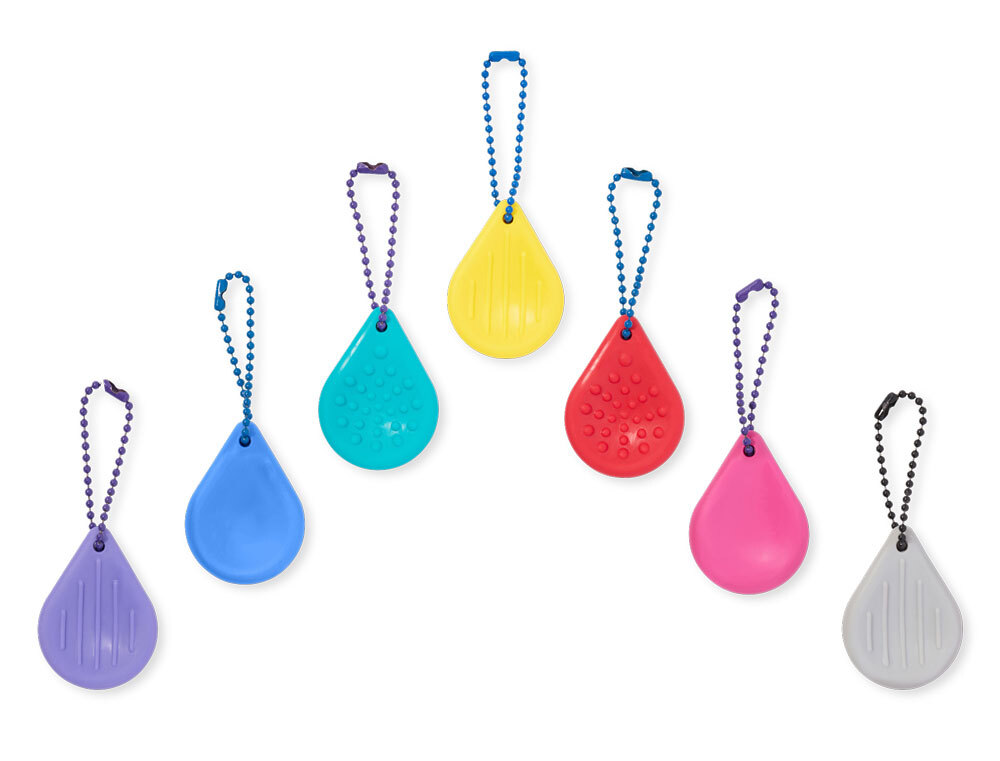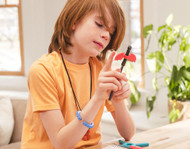How to Help Kids Stay Regulated through the Holidays
Posted by Katie Zelinski, MS, OTR/L on 4th Nov 2025
The holidays are often filled with excitement, tradition, and togetherness, but they can also feel overwhelming for kids. Extra noise, changes in routine, new places, and busy schedules can make it harder for children to stay regulated.
If your child seems to melt down more easily, cling a little tighter, or struggle with big feelings this time of year, you're not alone. The good news is that with a few simple supports, you can help your child feel more grounded, connected, and able to enjoy the season alongside you.
Routines
So many of us thrive in our routines: Our morning coffee while scrolling our phones or a warm shower before bedtime.
While the holidays are often a time for travel and staying up late, we want to try to embed as many typical routines into the child’s day to support their state of regulation.
Sleep
- Consistent bedtime & wake time (within an hour of normal): Helps kids maintain circadian rhythm and avoid overtired meltdowns.
- Wind-down routine: Keep the same order (bath → PJs → story → lights out), even if the bedtime is shifted.
- Rest breaks: Build in quiet time (books, drawing, connection with parent) during busy holiday days to prevent overstimulation.
- If they are in need of lots of oral or tactile input, use the Z-Vibe with the toothbrush attachment for additional vibration before and after sleep/wake routines.
Mealtime Routines:
- Pack preferred food options when traveling: Now is not the time to introduce new and non-preferred foods.
- Help family members understand the child’s food preferences and encourage them to be accepting of the child’s current food habits.
- Try to keep meal times consistent: It’s okay if the child doesn’t eat with you. Better to be happy than hangry.

Connection and Coregulation
Co-regulation is such a powerful tool that will support the child wherever you go. It’s when you, as the adult, help the child feel safe through connection, sensory supports, and environmental modifications. This is going to be especially necessary during the holiday season, when that child is feeling a little too excited or stressed. YOU are your child’s best support system.
What we can do:
- Dedicate a few solo minutes a day to them: Even 10 minutes of undivided attention helps kids feel secure amidst the holiday chaos. Maybe it’s a morning or bedtime check-in: "What’s one thing you’re excited about?" or "What was your favorite part of today?" Maybe it’s just playing with their favorite toy together in a quiet space.
- Pay attention to their cues: Attunement is where we are aware and responsive to another person's needs. In this case, we are paying attention to the child's verbal and non-verbal communication and responding to them with love, safety, and support. A child with tons of energy may be telling you they need help organizing their body. A child who is crying may be telling you they need a hug. If we listen, we can help them.
- Give them extra time for transitions: Let kids know what comes next by using a visual schedule or verbal warnings to support upcoming changes. Countdown timers, playing a song, or even showing them a picture of the next thing to come will be helpful. Using a transition item when leaving the house is also helpful. For example, a stuffed animal, a book, or bubbles.

10 WAYS TO CO-REGULATE this holiday season:
- Step into a quiet space for deep breathing
- Play a game together
- Go for a stroll outside
- Dim the lights
- Drink hot cocoa together, dropping in marshmallows one at a time
- Read a story under a weighted blanket
- Use a tool together, like the SolaBite, a 5-pointed chew tool
- Create a snow/ice sensory bin
- Bake together
- Empathize (Say: "This is hard"), validate (Say: "You're right to feel this"), support (Say: "I'm here with you, let's breathe together")

Sensory Solutions
Holiday lights, costumes/dress, and music can all create sensory overload for many of our clients. Instead of "dealing" with the distress, we can prioritize sensory strategies to support their state of just having them regulate.
Sensory Environment
- Proactive sensory supports: We want to set children up for success by frontloading sensory supports throughout the day, giving them multiple chances to regulate before challenges arise. One simple way to do this is by weaving heavy work into everyday routines. For example, your child might push bins of holiday decorations across the room, pull their own suitcase through the airport, or help carry bags of groceries inside. These small moments add up, building regulation right into the flow of the day.
- Re-think clothing options: Sometimes we have to pause and ask ourselves, "What matters more: our child's full participation, or them wearing the pretty dress"? Of course, it’s possible to find clothing that’ both comfortable and stylish. But above all, our priority should be helping the child feel good in their own skin. One simple way to support this: Provide deep pressure input to the areas where the clothing feels tricky. Gentle squeezes, squishes, or firm hugs to arms, shoulders, or legs can help the nervous system settle, making that outfit just a little easier to tolerate.
- Less is more: Holiday decor is so fun for so many people, but it’s really no fun at all for others. If you have a child who is over-stimulated by visuals, maybe limit what you put out in the shared spaces but add a few extra lights to your own bedroom.

Sensory Tools for travel:
- Chewelry: When stress rises, so does the need to chew. ARK chew necklaces provide a safe alternative to sweatshirt sleeves and random items from their space. Plus, being that it's a necklace, it’ll be within a hand's reach at all times and can live inside their shirt to decrease germ exposure. There are so many options, but I love the Krypto-Bite.
- Calming Key Chain: Like a worry rock, but better. The SensaStone little pocket fidget has the perfect divet for the thumb to rub against, while it is securely attached to a belt loop or backpack. It comes in 3 different textures to support every child's tactile needs.
- Z-Vibe with the Preefer Tip: This little device packs a big punch and provides vibration to the body or mouth. Vibration can act as both alerting and calming input, which can help regulate any child, depending on their needs. Use the round Preefer Tip to glide the Z-Vibe slowly up and down the child's arms and legs, or let them explore it in their mouth if they want.
- Headphones: Noise-cancelling (or reducing) headphones are a quick way to change the sensory environment when someone is more sensitive to auditory input. Whether you are at a busy family gathering or riding on a plane, these headphones can dampen many of the environmental sounds in the child’ s space.
- ARK Wingamajig: This twisty pencil topper / handheld fidget is one of my favorites. Any of the single-wing options are great for spinning, but the dragonfly has two wings, making it an excellent choice for two-hand fidgeting.
✨ Here’s to a holiday season filled with connection, not just activity.
Katie Zelinski
Katie Zelinski is an Occupational Therapist and owner of The Well-Balanced OT, an online mentorship and education platform for pediatric OTs and other providers. She specializes in sensory processing and regulation.
Follow Katie on Instagram @the.well.balanced.OT or visit her website at www.TheWellBalancedOT.com.
.


